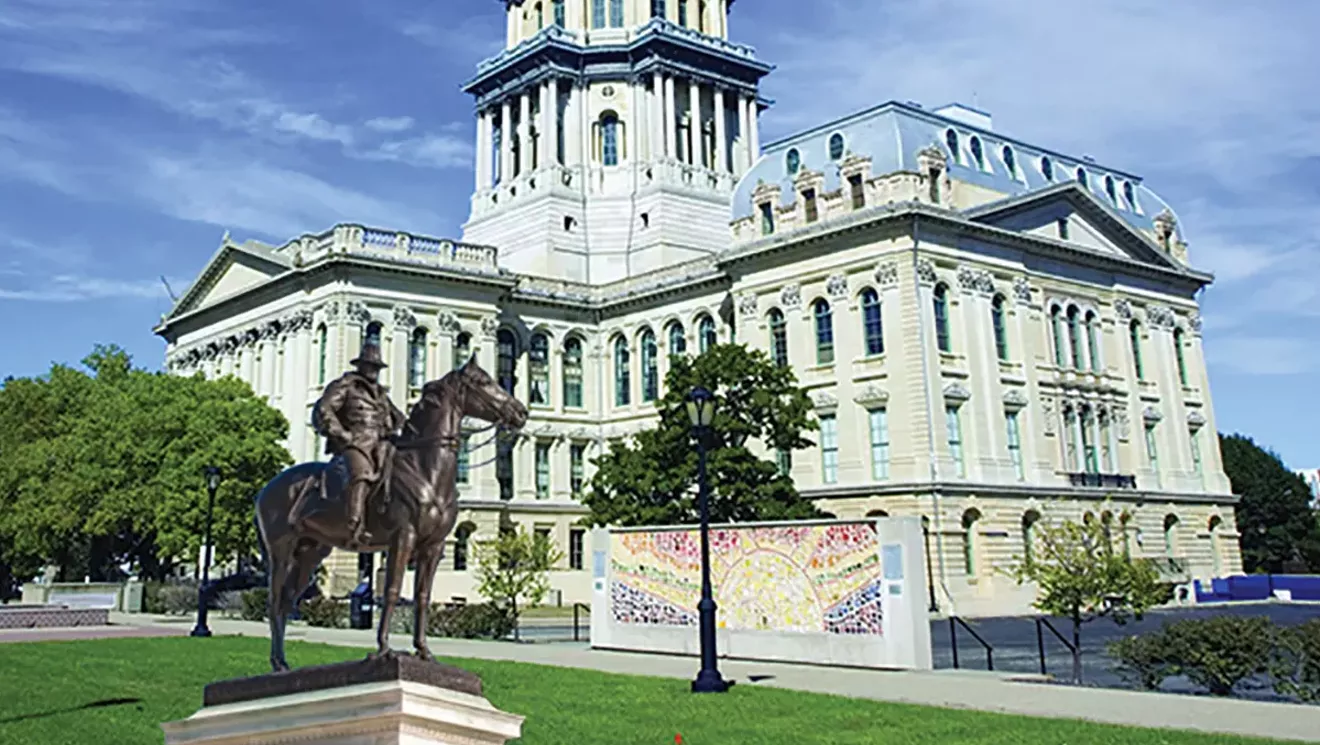
Being a veteran of the infamous siege of Khe Sanh in the Vietnam War in 1968, I could relate somewhat to the siege that occurred at Vicksburg, Mississippi, in 1862 during America’s Civil War, when the Confederate defenders of the hilly Mississippi River town came under siege by Union forces led by General Ulysses S. Grant. Grant was born 203 years ago this week, April 27, 1822.
To avoid the constant shelling by the North’s ironclads floating on the river below the steep bluffs of Vicksburg, the Confederate soldiers, along with civilians, were forced to go underground. To keep from starving to death they resorted to eating skinned rats and mule meat because the ironclads prevented them from being resupplied with regular food.
Abraham Lincoln considered the campaign against Vicksburg to be critical in stopping the flow of Confederate war materiel down the river from Cairo, Illinois, where the Ohio River poured into the Mississippi, to New Orleans, another rebel stronghold that served as an anchor for the Confederacy’s war effort in the deep South. Lincoln called upon Grant, who was living in Galena, Illinois, at the time, to lead the Bluecoats in their siege of the Confederate bastion. The siege was successful, thanks in part to Admiral David Porter’s Union Navy, whose ironclads bombarded Vicksburg relentlessly until the Rebels surrendered.
After the resounding victory, Grant’s army seized the momentum and marched eastward through Dixie with the goal of capturing Richmond, Virginia, the South’s capital city, before General Robert E. Lee’s forces got there first to defend it.
Along the way, Grant and Lee clashed continuously in running battles, beginning with the one at Cold Harbor where Grant’s men were soundly defeated by Lee’s. Out of 25,000 Union troops that attacked the well-entrenched Rebels, nearly 7,000 were killed or wounded. They clashed again in the horrific Battle of the Wilderness where Grant’s reinforced army of 120,000 men mounted an attack against Lee’s army through the foreboding terrain of dense briars and thick, foot-tangling vines. They were also hampered by a spring thunderstorm whose lightning started fast-moving brush fires. But the storm proved to be a double-edged sword. Not only did its rain put the fires out, but it turned the battlefield into mud, bogging down the soldiers on both sides, preventing them from mounting attacks.
The following afternoon the sun shone brightly, drying the mud just enough for the combatants to regain their footing and mount attacks. Grant took the initiative and attacked first with 20,000 men who quickly overcame the Confederates, killing or capturing thousands of them as Lee defiantly rode his horse into the midst of the melee to rally his men to keep fighting, although they were on the brink of defeat. Eventually Grant’s charges prevailed, and the Southerners retreated while the Northerners proceeded toward Richmond.
The war became a race between the Rebels and the Yankees to determine the fate of Richmond. For six months the inconclusive running battles between the two had taken place in the Battle of the Wilderness, Spotsylvania and in the fields north of Richmond, all of which resulted in tremendous casualties on both sides.
Meanwhile, General Sherman’s troops, who were fresh from a rampage through the South that included the devastation of Atlanta, marched up to Richmond where they rendezvoused with Grant’s troops, who had surrounded the capital before Lee’s could get there in time to save the city.
Symbolically, while the Union’s President Lincoln was visiting Grant’s army to congratulate them on their victory, Confederate president Jefferson Davis fled the city to avoid being arrested for insurrection and treason against the United States, leaving Lincoln to be the undisputed president of these reunited states.
With Davis gone it was left up to Lee to officially surrender the Confederacy, which he did at the Appomattox Court House, to his archrival Grant, who accepted it graciously, “with malice toward none and charity for all,” as Lincoln would later say in 1865 in his Second Inaugural Address a mere month or so before his assassination.
Years later, in 1869, Grant became a U.S. president like his former Commander-in-Chief Lincoln had done, setting a precedent for General Dwight D. Eisenhower, who had commanded all Allied forces in Europe during World War II, to follow when he was elected president after the war that ended with the surrender of the Nazis in 1945.
So why, pray tell, isn’t there a statue of Grant on the Illinois Statehouse lawn, in addition to Lincoln’s, like the late Judy Barr Topinka, former state treasurer, had proposed long ago? After all, both had lived in Illinois, became American presidents, and both were instrumental in winning the Civil War.
Mike Shepherd, who lives in the country near Springfield, is a freelance writer who served as a radio news reporter for 7th Air Force Information and Armed Forces Radio in the Vietnam War. He’s the author of a recently published book entitled Vietnam War Stories that’s about some of his experiences there.


